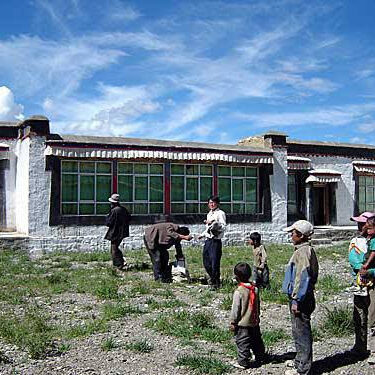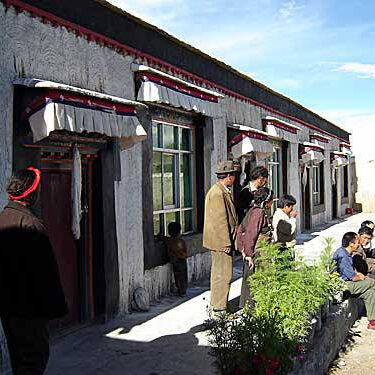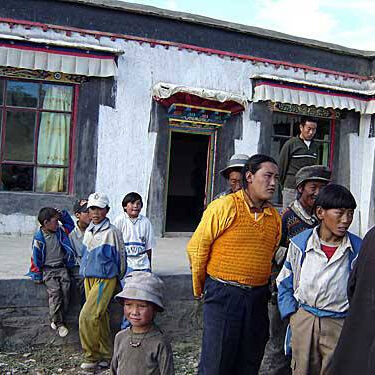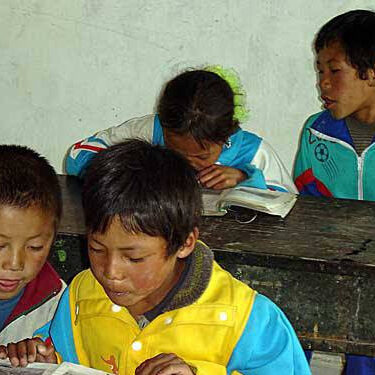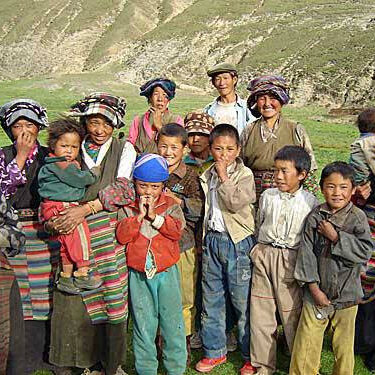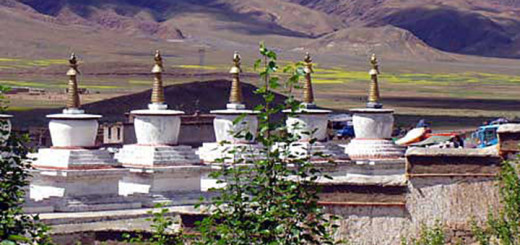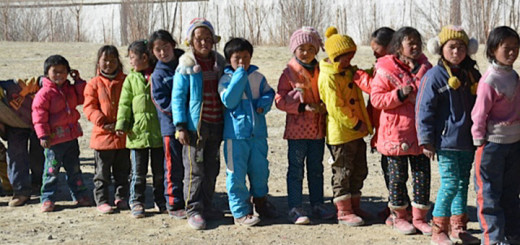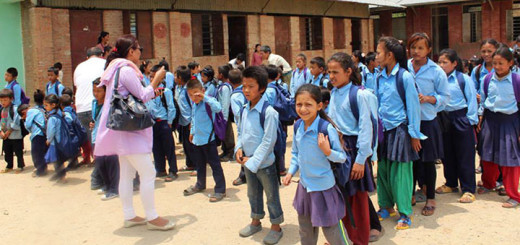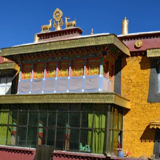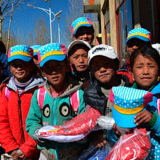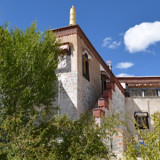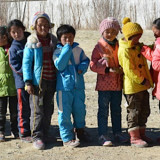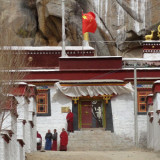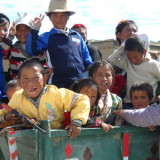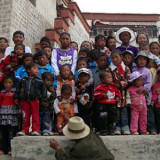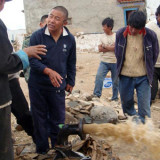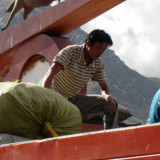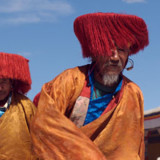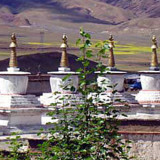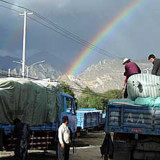Tibet 2005
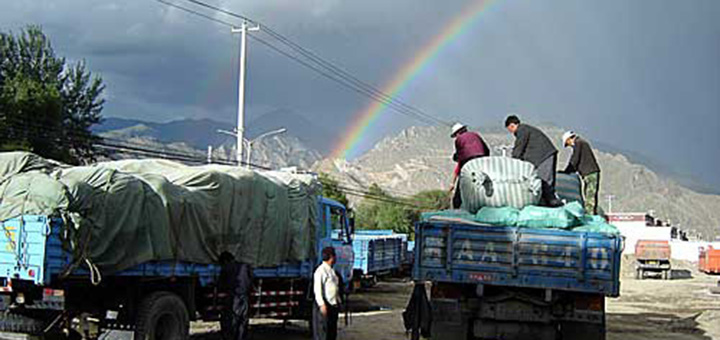
HEALTH
Nepu Dispensary
A donation made in 2005 by the Italian company Chiesi Farmaceutici was allocated to the realisation of a dispensary in Nepu Village, which is located in an area completely without medical assistance. This wonderful news reached the village just as work on the new school was about to finish; it was therefore possible to quickly continue with the building work whilst the necessary equipment was still on site.
The construction work continued at a fast pace, because it was the wish of everyone to finish the initial work before the arrival of representatives of the Association. Thanks to the commitment and enthusiasm of the building coordinators and labourers, the construction was almost completely finished in August of this year.
The building is located about 500 metres from the newly built Nepu School, in the direction of nearby Shishung Village and of other villages that are all connected by a dirt track. These villages will also be able to access the new services.
There is a waiting room, a consultation room, a larger room that will provide bed places, a storeroom for medicines and materials and two rooms for the doctor and his family.
The dispensary will function as part of the government medical structure and as such a Tibetan doctor will soon be assigned to it.
Singma Gangchen Dispensary
Thanks to funds collected a new and bigger dispensary has also been built in Singma Village: it is an ample building with a large courtyard situated next to the main road that runs from the cities of Lhasa and Shigatse to the border of Nepal. Even though it is a dirt road – at this time however there are road works underway that will make a great improvement – it is one of the main roads in Tibet and as such makes the dispensary very easy to reach from many other neighbouring villages. A Tibetan doctor and his family are already living in the new building, which will substitute the older and smaller dispensary in the nearby Gangchen Village. This dispensary is in very bad conditions because of the extreme Tibetan weather conditions.
It is of utmost importance that the inhabitants of these villages have at least a basic medical assistance to count upon, because their state of health is often already weak due to the climate, diet and contaminated water. The healthcare structures of the city are too expensive and difficult to reach, and often those who are sick remain without any kind of help.
SCHOOLS
Thanks to funds collected from the end of 2004 and in 2005, two new schools have been built in villages that the Association helps:
Nepu Village School
The construction of the school started at the end of 2004, thanks to a donation from the Italian company Chiesi Farmaceutici, and was already completed by March 2005 owing to the enthusiasm and hard work of many village inhabitants – who also managed to find work during those months.
In the month of August scholastic activities were already underway, thanks to the arrival of a new teacher from the city of Lhasa.
The school building consists of three classrooms (from class 1 to 3), rooms for the teacher and his family, a large assembly room, a storeroom and a kitchen; it is situated in a courtyard protected by a surrounding wall, where the children have planted lots of small trees, so precious at this altitude for their life.
Soon new desks and chairs will arrive for the school, as well as a stock of books and stationary.
The children were already hard at work studying in their new school, and in return for this big gift they give to us their most beautiful smiles.
Pandin Village School
Last year the inhabitants of Pandin Village asked the Association for help because the old village school, a small precarious building situated on the rocks near the banks of a small river, which when full has threatened more than once the safety of the actual building and its occupants.
Thanks to the funds collected it was possibile to buy materials to build a new school, which in the summer of 2005 was already finished and working.
The women of the village came one by one to offer gifts to the representatives of the Association – cups of tea, barley beer, a handful of incense, a white Tibetan scarf – to all of you we would like to communicate the immense gratitude that these mothers feel for those who have helped their children so much.
Monasteries
The help of the Association reaches many monasteries, where the precious medical, artistic and spiritual traditions of Tibet are kept and preserved. Often these buildings are precarious, and are in need of continuous repairs because of the harsh climatic conditions of Tibet. The monks live simply, studying and carrying out all kinds of manual work: but the monasteries exist only on the offerings they receive and so need help to buy food, medicines, clothes, shoes, beds, covers, fuel and to take in more children who want to study. In the summer of 2005, the donations collected reached hundreds of monks and young children studying in monasteries.
click on the images to see the galleries
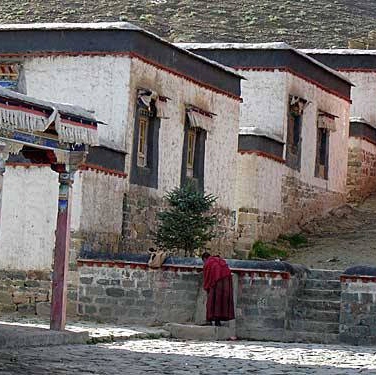
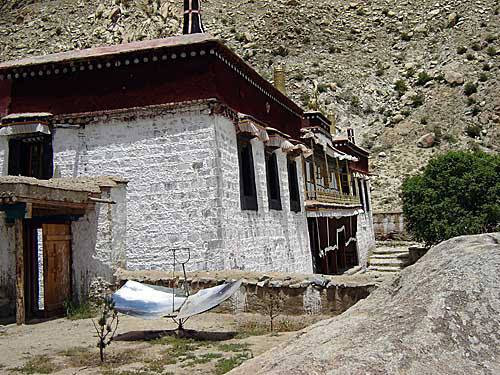
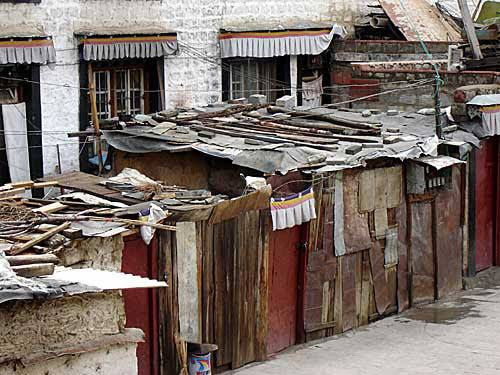
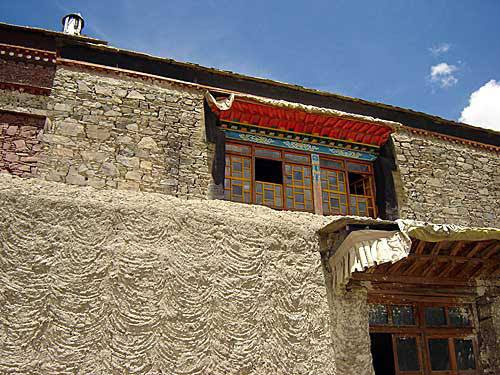
Long Distance Adoptions
The long distance adoptions project in Tibet was started in 1997, with only a few children receiving help: thanks to your support, in the summer of 2005 we delivered aid in 22 villages of the Shigatse region in Central Tibet, to a total of 2600 children.
In the cities of Lhasa and Shigatse we bought hard wearing clothes and shoes able to protect children during the cold of the coming winter: wind jackets, jumpers, trousers and long johns, trainers and leather shoes, hats, socks and then exercise books, pens and ink, pencils, toothbrushes and toothpaste, soap and towels.
Each family received, as well as money and the above gifts for each child, sacks of rice, flour and ground barley to help them confront the winter.
Everything was distributed between the families of the villages, under the coordination of the Local Government, based upon their lists of the inhabitants: also this year it was a joyful occasion, and everyone took a break from working in the fields to pass together a day of celebrations.
With the passing of the years we are beginning to understand more deeply the importance of this help to the villages: how our arrival is anxiously awaited for by everyone, how for each child and their family it is important to hear their name called amongst those children who have benefactors – even if after they all receive the gifts. For them it means that someone thinks of them everyday, that someone has taken to heart their difficult situation, and to them this is an enormous comfort.
The “thanks” contained in the letter of the children and their families, even if expressed in a simple and repetitive way, are really very sincere and deep.
The aid distributed directly to the families are of great help to everyone, but are still not enough to secure them a serene and dignified existence, because there are other fundamental necessities to fulfil: the lack of water, schools, medical assistance, transport, trees. For this reason a part of the donations collected each year are allocated to projects in favour of the community in which the children live.
click on the images to see the galleries
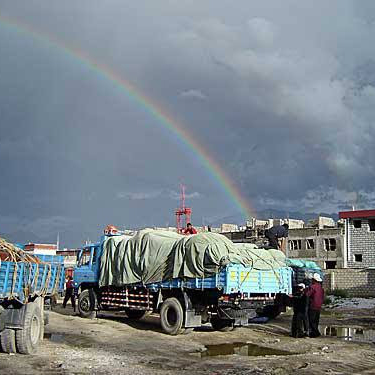
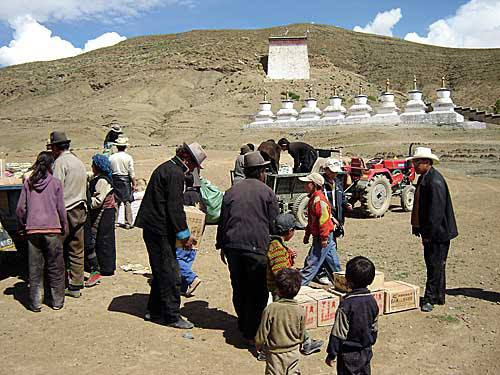
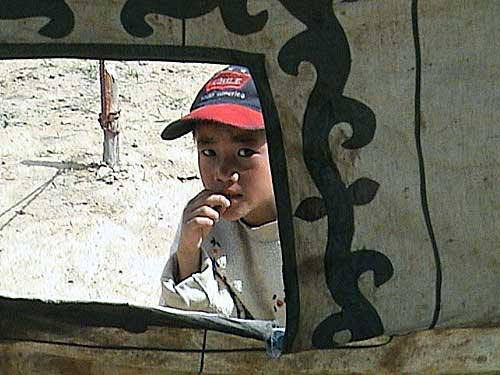
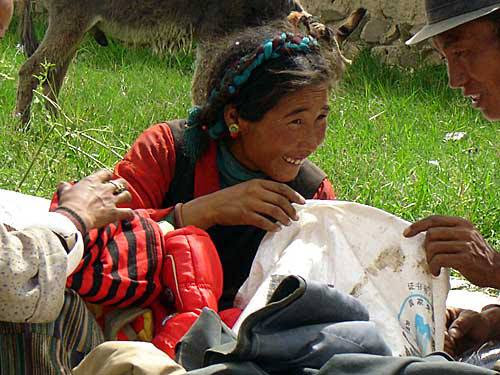
A glimpse at village life
Amongst the many villages reached by the help of the Association, this year were also some small villages of the Namling District where there is extreme poverty.
For example, in one house lives a woman and her son: the house is one small room, blackened by smoke, with two straw mattresses and a stove in the centre. Until last year there was even no window to let in a little light or air, but last year thanks to the help they received they were able to buy a piece of glass and finally open one. In another house lives a large family: they also live in the same way, without glass regardless of the cold climate. This winter they too will be able to close their window.
All the children in this village also received clothes, shoes and school materials, as well as a stock of rice and flour for the family so they can confront with tranquillity the winter that often isolates them from the external world.

